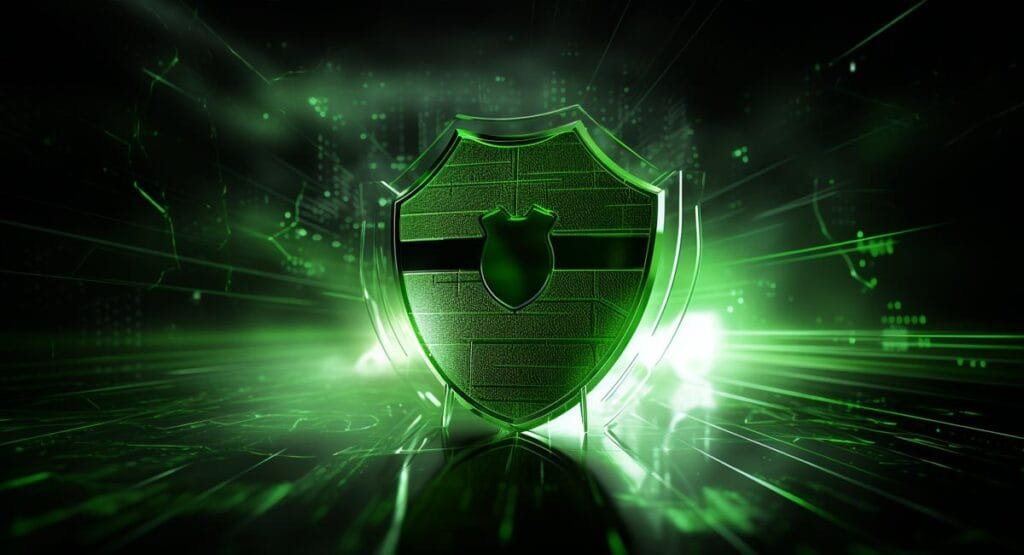Cyber Security, a rapidly evolving and increasingly vital field, plays a pivotal role in safeguarding our digital world. As our reliance on technology grows, so does the need for professionals who can protect our data and systems from cyber threats. This article delves into the top cybersecurity jobs that are in high demand today. Whether you’re a student considering a career in cybersecurity, a professional looking to pivot into this sector, or simply curious about the roles that keep our digital landscape secure, this guide will provide you with a comprehensive overview of the most sought-after positions in the field. We’ll explore the responsibilities, qualifications, and potential career trajectories for each role. Additionally, we’ll back our discussions with statistics, expert opinions, and research to give you a holistic understanding of the cybersecurity job market.
List of the Top Cyber Security Jobs
Table of Contents
- Information Security Analyst
- Penetration Tester
- Security Architect
- Incident Responder
- Chief Information Security Officer (CISO)
- Frequently Asked Questions
- Final Thoughts
- Sources
Information Security Analyst
In today’s digital age, where data breaches and cyber threats are becoming increasingly common, the role of an Information Security Analyst is more crucial than ever. These professionals act as the first line of defense, ensuring that an organization’s computer systems and networks remain secure from potential threats.
Overview: Information Security Analysts are specialized professionals within the broader field of cybersecurity. Their primary focus is to safeguard an organization’s information systems by monitoring, detecting, and responding to cyber threats. They play a pivotal role in ensuring that sensitive data, whether it’s customer information, financial records, or proprietary company data, remains inaccessible to unauthorized users.
Key Responsibilities
- Monitoring and Detection: Regularly monitor the organization’s networks for security breaches using advanced tools and software.
- Incident Response: In the event of a security breach, lead the response, which includes investigating the cause, mitigating the damage, and preparing reports on the nature and extent of the breach.
- Implementation of Security Measures: Install and manage software, such as firewalls and data encryption programs, to protect sensitive information.
- Policy Development: Assist in the creation, implementation, and maintenance of security policies and protocols for the organization.
- Vulnerability Testing: Conduct periodic scans and tests to ensure that systems are secure and to identify any vulnerabilities.
- Stay Updated: Continuously research the latest IT security trends, technologies, and best practices to stay ahead of potential threats.
Required Skills and Qualifications
- Educational Background: A bachelor’s degree in computer science, cybersecurity, or a related field is typically required.
- Certifications: While not always mandatory, certifications like CISSP (Certified Information Systems Security Professional) or CISM (Certified Information Security Manager) can provide a competitive edge.
- Technical Proficiency: Familiarity with firewalls, VPNs, routers, and other network hardware. Knowledge of risk assessment tools, technologies, and methods.
- Analytical Skills: Ability to analyze security systems and seek out vulnerabilities.
- Attention to Detail: Small discrepancies can be the difference between a secure system and a vulnerable one.
Career Path and Progression
Starting as an Information Security Analyst, professionals can progress to senior or lead analyst roles. With experience and additional qualifications, they can move up to roles like Security Manager, Security Director, or even CISO (Chief Information Security Officer).
Salary and Job Outlook
According to the Bureau of Labor Statistics, the median annual wage for information security analysts was $99,730 in May 2019. The job outlook for this role is also promising, with employment projected to grow 31 percent from 2019 to 2029, much faster than the average for all occupations.
Challenges and Rewards
While the role can be demanding, with the need for constant vigilance and the pressure of potential breaches, the rewards are significant. Information Security Analysts have the satisfaction of knowing they’re protecting vital data and playing a crucial role in their organization’s overall well-being.
Penetration Tester
In the realm of cybersecurity, Penetration Testers, often colloquially known as “ethical hackers,” play a pivotal role. Their primary objective is to identify and exploit vulnerabilities in systems, networks, and applications before malicious actors can. By doing so, they provide invaluable insights into potential security flaws, allowing organizations to bolster their defenses.
Overview: Penetration Testers simulate cyber-attacks on systems, networks, and applications in a controlled environment. Their goal is not to cause harm but to uncover vulnerabilities. By identifying these weak points, organizations can take proactive measures to enhance their security posture.
Key Responsibilities
- Vulnerability Assessment: Before diving into penetration testing, testers often conduct vulnerability assessments to identify potential weak points in the system.
- Simulated Cyber Attacks: Launch controlled attacks on systems to evaluate their resilience against various threats.
- Reporting: After testing, create detailed reports outlining the vulnerabilities discovered, data accessed, and recommendations for securing the system.
- Staying Updated: Continuously research the latest cybersecurity threats and trends to develop new testing techniques.
- Collaboration: Work closely with IT and security teams to remediate identified vulnerabilities.
Required Skills and Qualifications
- Educational Background: A degree in IT, computer science, or a related field is beneficial but not always mandatory.
- Certifications: Certifications like CEH (Certified Ethical Hacker), OSCP (Offensive Security Certified Professional), and GPEN (GIAC Penetration Tester) can provide a competitive edge.
- Technical Proficiency: Deep understanding of operating systems, databases, networking, and programming languages.
- Analytical Mindset: Ability to think critically and approach problems from various angles.
- Ethical Integrity: Given the nature of the job, it’s crucial for penetration testers to operate within ethical boundaries and maintain the utmost confidentiality.
Tools of the Trade
Penetration Testers often utilize a range of tools, including:
- Metasploit: A widely-used tool for developing, testing, and executing exploit code.
- Nmap: A powerful open-source tool for network discovery and security auditing.
- Wireshark: A network protocol analyzer that captures and inspects packets in real-time.
- Burp Suite: A popular tool for web vulnerability scanning and penetration testing.
Career Path and Progression
Starting as a junior penetration tester, professionals can progress to senior or lead roles. With experience, they might specialize in areas like web application testing, network testing, or red teaming. Eventually, they can move into roles like Penetration Testing Team Lead, Security Consultant, or even CISO (Chief Information Security Officer).
Salary and Job Outlook
According to PayScale, the average salary for a Penetration Tester in the U.S. is around $84,690 as of 2021. However, this can vary based on experience, location, and certifications. The demand for penetration testers is on the rise as organizations increasingly recognize the importance of proactive security measures.
Challenges and Rewards
The role of a Penetration Tester is both challenging and rewarding. It requires continuous learning, as the cybersecurity landscape is ever-evolving. However, the satisfaction of uncovering vulnerabilities and enhancing an organization’s security makes it a fulfilling profession for many.
Security Architect
In the intricate world of cybersecurity, the Security Architect stands as a sentinel, designing the fortifications that protect an organization’s digital assets. These professionals are responsible for crafting the blueprint of an organization’s security infrastructure, ensuring that it is both robust and adaptable to evolving threats.
Overview: Security Architects play a pivotal role in the planning and design phase of IT projects, ensuring that security is integrated from the outset. They work to balance functionality with security, ensuring that an organization’s operations can proceed without compromise to its digital safety.
Key Responsibilities
- Design & Blueprint: Develop a comprehensive security architecture for an organization’s computer systems, networks, and data centers.
- Risk Assessment: Evaluate potential security breaches and design countermeasures to mitigate risks.
- Policy & Standards Development: Create, implement, and oversee security policies, standards, and procedures to ensure ongoing maintenance of security.
- Stay Updated: Continuously research the latest security standards, systems, and authentication protocols.
- Collaboration: Work closely with other departments, like IT and Risk Management, to ensure security measures align with business objectives.
Required Skills and Qualifications
- Educational Background: A bachelor’s or master’s degree in computer science, cybersecurity, or a related field is typically required.
- Certifications: Certifications like SABSA (Sherwood Applied Business Security Architecture), CISSP-ISSAP (Information Systems Security Architecture Professional), and TOGAF (The Open Group Architecture Framework) can be beneficial.
- Technical Proficiency: Deep understanding of network infrastructure, database design, and cloud computing.
- Analytical Skills: Ability to dissect complex systems and foresee potential vulnerabilities.
- Communication Skills: Given the need to explain and justify security measures to stakeholders, strong communication skills are essential.
Tools and Frameworks
Security Architects often utilize a range of tools and frameworks, including:
- Zachman Framework: A structure for enterprise architecture that provides a formal and structured way of viewing and defining an enterprise.
- ArchiMate: An open and independent modeling language for enterprise architecture.
- PKI (Public Key Infrastructure): A set of roles, policies, and procedures to manage digital keys and certificates.
- IAM (Identity and Access Management) tools: Software tools used to manage digital identities and specify what actions they are allowed or prohibited from performing.
Career Path and Progression
Starting as a Security Analyst or Engineer, professionals can progress to the role of a Security Architect. With further experience and expertise, they can move into roles like Chief Security Architect, Chief Information Security Officer (CISO), or even broader executive roles within the organization.
Salary and Job Outlook
According to Glassdoor, the average salary for a Security Architect in the U.S. is around $123,000 as of 2021. However, this can vary based on experience, location, and industry. As cyber threats continue to grow in complexity, the demand for skilled Security Architects is expected to rise.
Challenges and Rewards
Being a Security Architect is a role of great responsibility. The challenges include staying ahead of cyber adversaries and ensuring that security measures do not hinder business operations. However, the rewards are significant. Beyond the competitive compensation, there’s the satisfaction of knowing that one’s designs and strategies are safeguarding an organization’s digital assets.
Incident Responder
In the ever-evolving landscape of cybersecurity, Incident Responders are the unsung heroes who jump into action when things go awry. They are the digital firefighters, rushing to the scene when a breach occurs, working tirelessly to contain the damage, and ensuring that systems are restored to their secure state.
Overview: Incident Responders are specialized cybersecurity professionals trained to address and manage the aftermath of a security breach or cyberattack. Their primary goal is to handle the situation in a way that limits damage and reduces recovery time and costs. They also play a crucial role in analyzing the incident to prevent future threats.
Key Responsibilities
- Incident Detection: Monitor systems and networks for security breaches or intrusions.
- Initial Assessment: Once an incident is detected, assess its scope and impact.
- Containment: Act swiftly to contain the incident and prevent further damage or data loss.
- Eradication: Find the root cause of the incident and remove affected components from the environment.
- Recovery: Restore and validate system functionality for business operations to resume.
- Documentation & Reporting: Document every action taken, and create a final report detailing the incident’s cause and impact, along with recommendations for preventing future incidents.
- Continuous Learning: Stay updated with the latest threats and vulnerabilities to better prepare for future incidents.
Required Skills and Qualifications
- Educational Background: A degree in IT, computer science, cybersecurity, or a related field is often beneficial.
- Certifications: Certifications like GCIH (GIAC Certified Incident Handler), ECIH (EC-Council Certified Incident Handler), and CSIH (Certified Security Incident Handler) can be advantageous.
- Technical Proficiency: Strong understanding of networks, operating systems, and security infrastructures.
- Analytical Skills: Ability to analyze complex situations, think critically, and make quick decisions under pressure.
- Communication Skills: Given the need to liaise with various departments and stakeholders during and after an incident, clear communication is crucial.
Tools and Techniques
Incident Responders often employ a range of specialized tools, including:
- SIEM (Security Information and Event Management) systems: Platforms like Splunk or LogRhythm that provide real-time analysis of security alerts.
- Forensic Tools: Software like EnCase or FTK, which assist in digital investigations.
- Threat Intelligence Platforms: Tools like Recorded Future or ThreatConnect that provide information about emerging threats.
Career Path and Progression
Starting as an entry-level Incident Responder, professionals can progress to senior or lead roles. With experience and a proven track record, they might move into roles like Incident Response Team Lead, Security Operations Center (SOC) Manager, or even Chief Information Security Officer (CISO).
Salary and Job Outlook
According to PayScale, the average salary for an Incident Responder in the U.S. is around $81,000 as of 2021. However, this can vary based on experience, location, and industry. With the increasing frequency and sophistication of cyberattacks, the demand for skilled Incident Responders is expected to grow significantly.
Challenges and Rewards
The role of an Incident Responder is undoubtedly challenging, often requiring long hours and high-pressure decision-making. However, the rewards are manifold. Beyond the competitive compensation, there’s the satisfaction of knowing that their actions directly safeguard an organization’s assets and reputation.
Chief Information Security Officer (CISO)
The Chief Information Security Officer (CISO) stands at the zenith of the cybersecurity hierarchy. As a C-level executive, the CISO is responsible for steering the ship of an organization’s information security program, ensuring that it remains resilient against the ever-present and evolving cyber threats.
Overview: The CISO is a senior executive responsible for establishing and maintaining the enterprise vision, strategy, and program to ensure information assets and technologies are adequately protected. They are the bridge between the technical world of IT security and the business-oriented world of corporate leadership.
Key Responsibilities
- Strategic Leadership: Develop and implement a comprehensive information security program that aligns with the organization’s goals and objectives.
- Risk Management: Oversee the identification, evaluation, and mitigation of risks associated with the organization’s information systems.
- Policy Development: Establish and maintain policies, procedures, standards, and guidelines to ensure security compliance.
- Incident Management: Ensure the organization has processes in place to detect and respond to security incidents effectively.
- Budget Management: Secure and manage the budgetary resources necessary for appropriate security tools, technologies, and training.
- Stakeholder Communication: Act as the organization’s representative for all information security-related interactions, including with stakeholders, regulators, and third-party vendors.
Required Skills and Qualifications
- Educational Background: Typically, a bachelor’s or master’s degree in Information Security, Computer Science, or a related field. Many CISOs also possess an MBA to bridge the technical and business aspects of their role.
- Certifications: Recognized certifications like CISSP (Certified Information Systems Security Professional), CISM (Certified Information Security Manager), and CGEIT (Certified in the Governance of Enterprise IT) can be beneficial.
- Experience: Extensive experience in IT security, often spanning multiple domains like risk management, incident response, and governance.
- Leadership Skills: Strong ability to lead and motivate a team, ensuring alignment with the organization’s strategic goals.
- Communication Skills: Ability to communicate complex security topics to a diverse audience, from technical staff to board members.
Leadership and Strategy
A CISO’s role goes beyond the technical. They must be adept at:
- Building Relationships: Establishing strong ties with other C-level executives to integrate security into the broader business strategy.
- Change Management: Leading organizational change to foster a security-conscious culture.
- Future Visioning: Anticipating future security trends and challenges, ensuring the organization is always one step ahead.
Career Path and Progression
While the CISO role is often seen as the pinnacle in cybersecurity, there’s always room for growth. CISOs can transition to broader IT roles like CIO (Chief Information Officer) or even CEO positions, especially in tech-centric companies. They can also serve on advisory boards or become independent consultants, guiding other organizations in shaping their security posture.
Salary and Job Outlook
According to Salary.com, the average salary for a CISO in the U.S. is around $230,000 as of 2021, with variations based on company size, industry, and location. As cyber threats continue to grow in complexity and frequency, the demand for experienced CISOs is expected to rise, making it a lucrative career option.
Challenges and Rewards
The CISO role is undoubtedly demanding, with the weight of an organization’s digital security on their shoulders. However, the rewards are manifold. Beyond the competitive compensation, there’s the satisfaction of shaping an organization’s security strategy, influencing its culture, and safeguarding its assets and reputation.
Frequently Asked Questions
Final Thoughts
The cybersecurity landscape is vast and varied, offering numerous opportunities for professionals at all stages of their careers. As cyber threats continue to evolve, the demand for skilled professionals in these roles will only increase. The most crucial takeaway is that a career in cybersecurity is not only rewarding in terms of potential earnings and job security but also offers the chance to make a significant impact in protecting our digital world.
Sources
- Information Security Analyst:
- Penetration Tester:
- Security Architect:
- Incident Responder:
- Chief Information Security Officer (CISO):
I write for and assist as the editor-in-chief for 601MEDIA Solutions. I’m a digital entrepreneur since 1992. Articles may include AI assisted research. Always Keep Learning! Notice: All content is published for educational and entertainment purposes only. NOT LIFE, HEALTH, SURVIVAL, FINANCIAL, BUSINESS, LEGAL OR ANY OTHER ADVICE. Learn more about Mark Mayo









